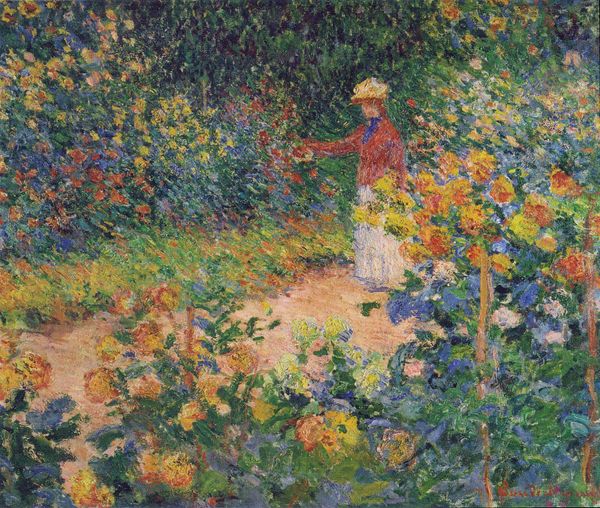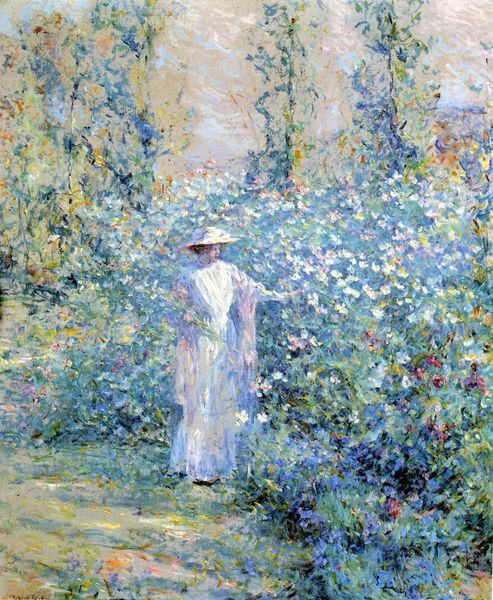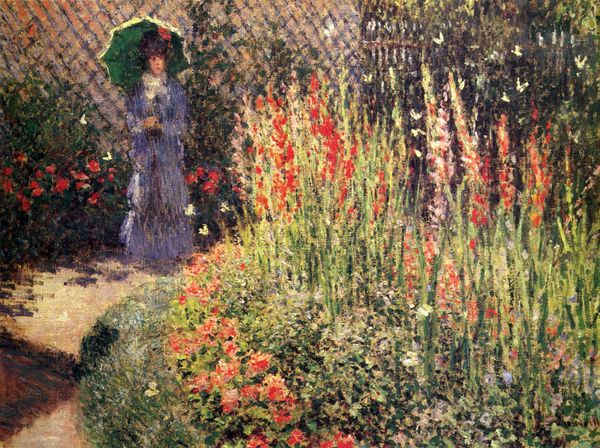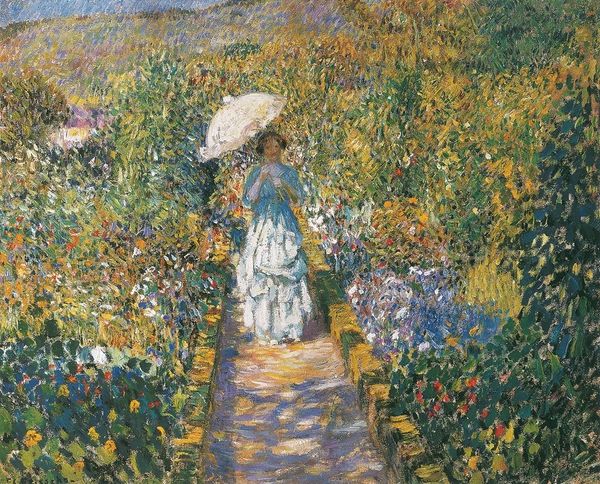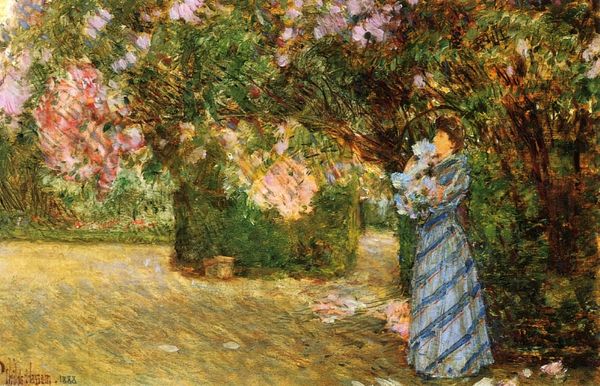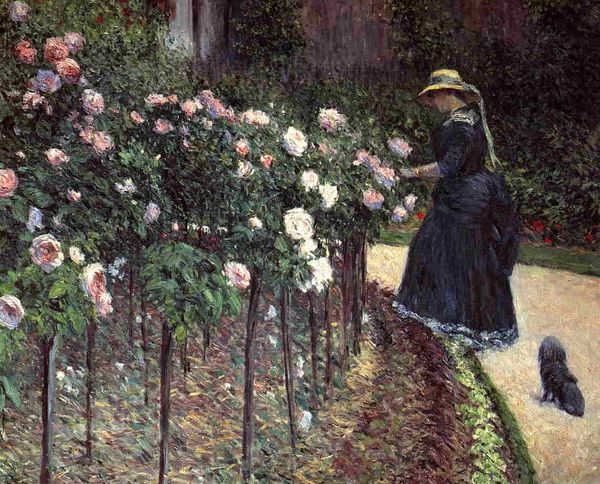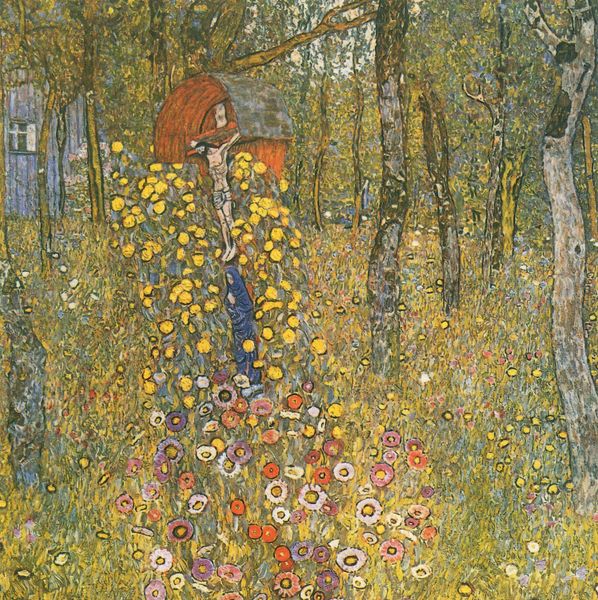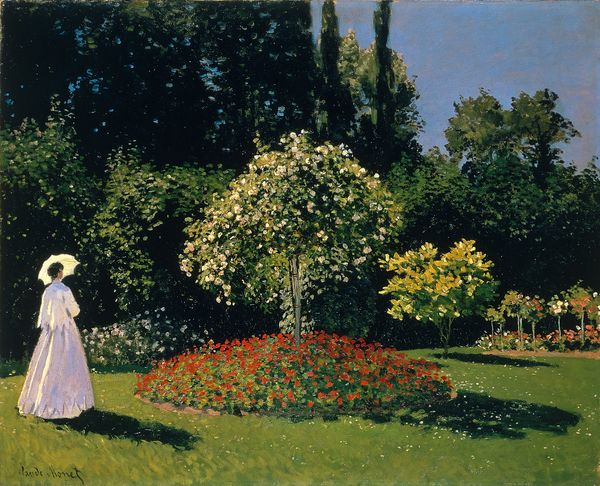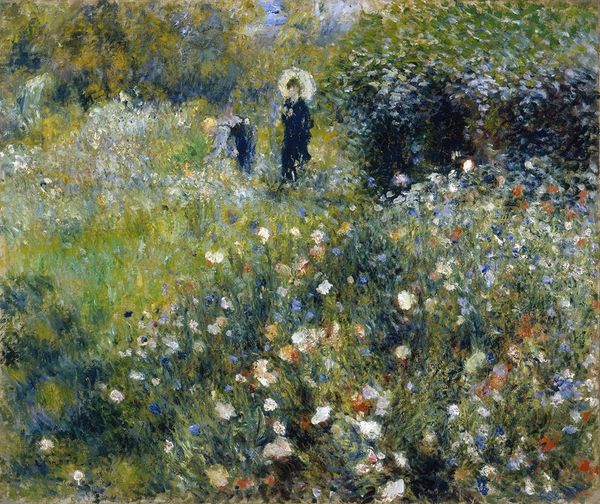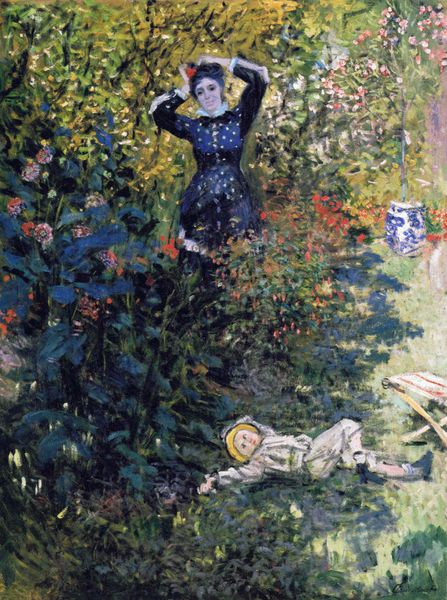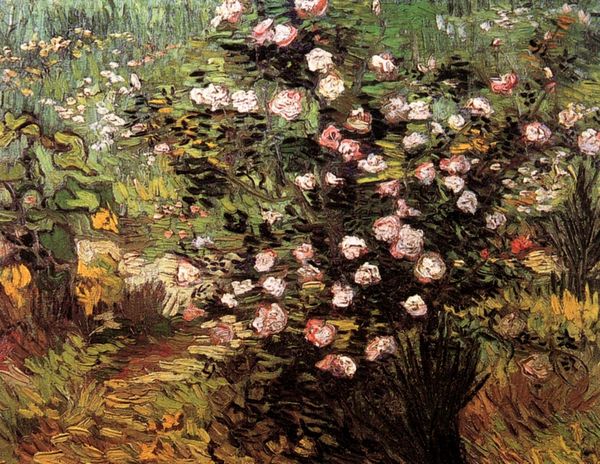
painting, plein-air, oil-paint
#
portrait
#
tree
#
painting
#
impressionism
#
plein-air
#
oil-paint
#
landscape
#
flower
#
leaf
#
impressionist landscape
#
figuration
#
plant
Copyright: Public domain
Curator: Standing before us is Claude Monet's "Woman with a Parasol in the Garden in Argenteuil," painted in 1875. Editor: It's luminous, immediately striking. The dabs of colour feel almost reckless, evoking a breezy summer day. There's a certain languid stillness about it that feels disconnected from the rapid urban changes occurring then. Curator: Indeed. Monet captures a specific moment through the use of plein-air techniques and oil paint. Note the arrangement of form; the garden offers us the composition. It leads to the central, yet unobtrusive figure, whose form creates balance. The artist's placement reflects careful attention to visual harmony. Editor: But let's not ignore the setting itself, or who it excludes. Monet is portraying a bourgeois existence, celebrating leisure accessible to a select few. These gardens and parasols—signifiers of privilege—shield women from harsh sunlight and, symbolically, from the labouring world outside. Who is the sitter? And what socio-economic factors allow for this scene? Curator: Precisely! This question of portraiture in Impressionism is intriguing. The brushwork reduces distinct forms into impressionistic sketches. Note that light defines everything: modulating colour relationships and the interaction of light with form. This use of opticality creates the scene's structural harmony. Editor: Though, arguably, its superficiality too. I am aware I could be critical of aesthetic judgements but, as scholars like Griselda Pollock note, paintings of this era often invisibilized the working classes. They helped establish a narrative about modern life that favoured certain experiences and identities. By choosing a garden over, say, the crowded boulevards of Paris, Monet offers a selective vision of his era, one that reflects a particular class position. Curator: That position allows us to investigate pictorial structure, the play of light on planes, and spatial design and this alone adds to the historical legacy of visual modernism. We can recognize these complex facets together. Editor: Yes. Seeing both the artistic and socio-economic dimensions helps me to appreciate this particular contribution within Impressionism and society with critical eyes. Curator: A truly well-considered response and, ultimately, how enriching that even just an image can make us look at things in a new perspective.
Comments
No comments
Be the first to comment and join the conversation on the ultimate creative platform.
